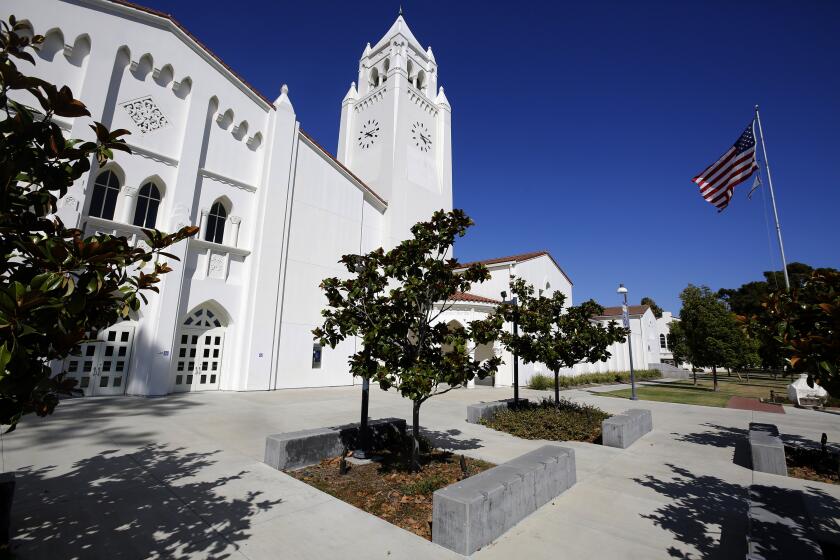Once a pandemic necessity, Newport-Mesa’s virtual Cloud Campus reforms as winds shift
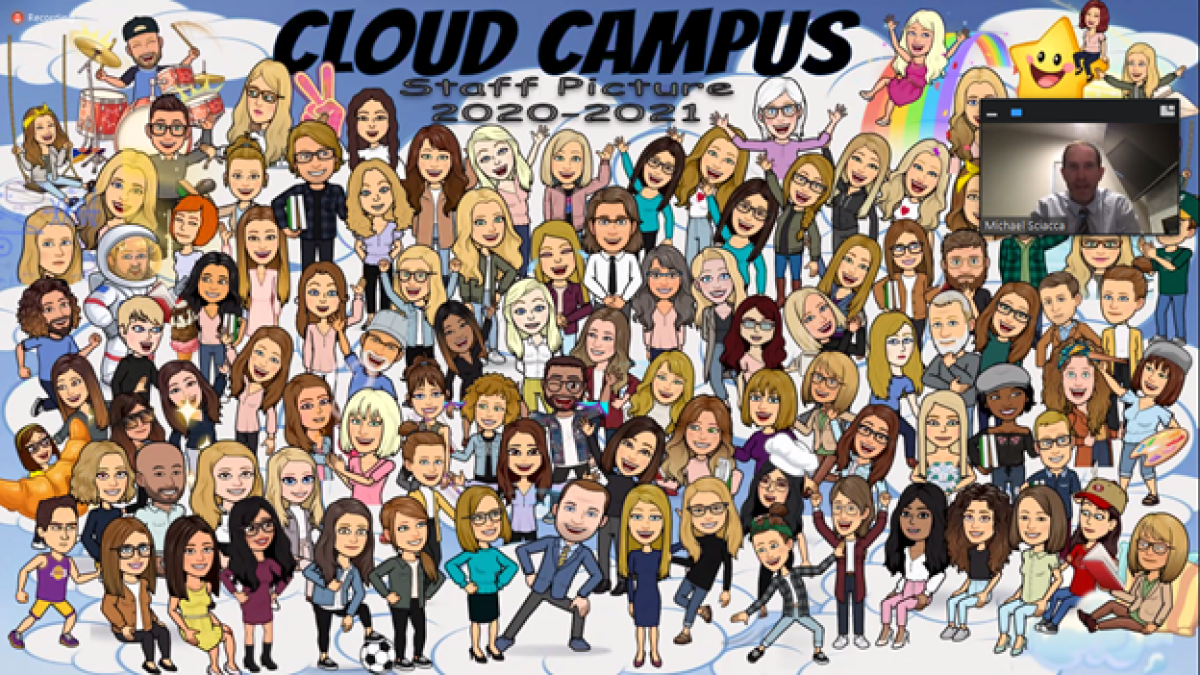
- Share via
At the peak of the COVID-19 pandemic, Newport-Mesa Unified School District crafted a reopening plan to segue students from remote learning into brick-and-mortar schools in either a hybrid or fully in-person model, based on transmission rates of the coronavirus.
Many families lauded the plan. But others, fearing the risk of sending at-risk kids back to campuses where they might be exposed to the virus or bring it back to a compromised family member, sought a 100% virtual learning option.
District officials complied, and the TK-12 Cloud Campus was born. Teachers were reassigned and coursework retooled to accommodate a format where kids learned together on Zoom part of the school day and worked independently on assignments the rest of the time.
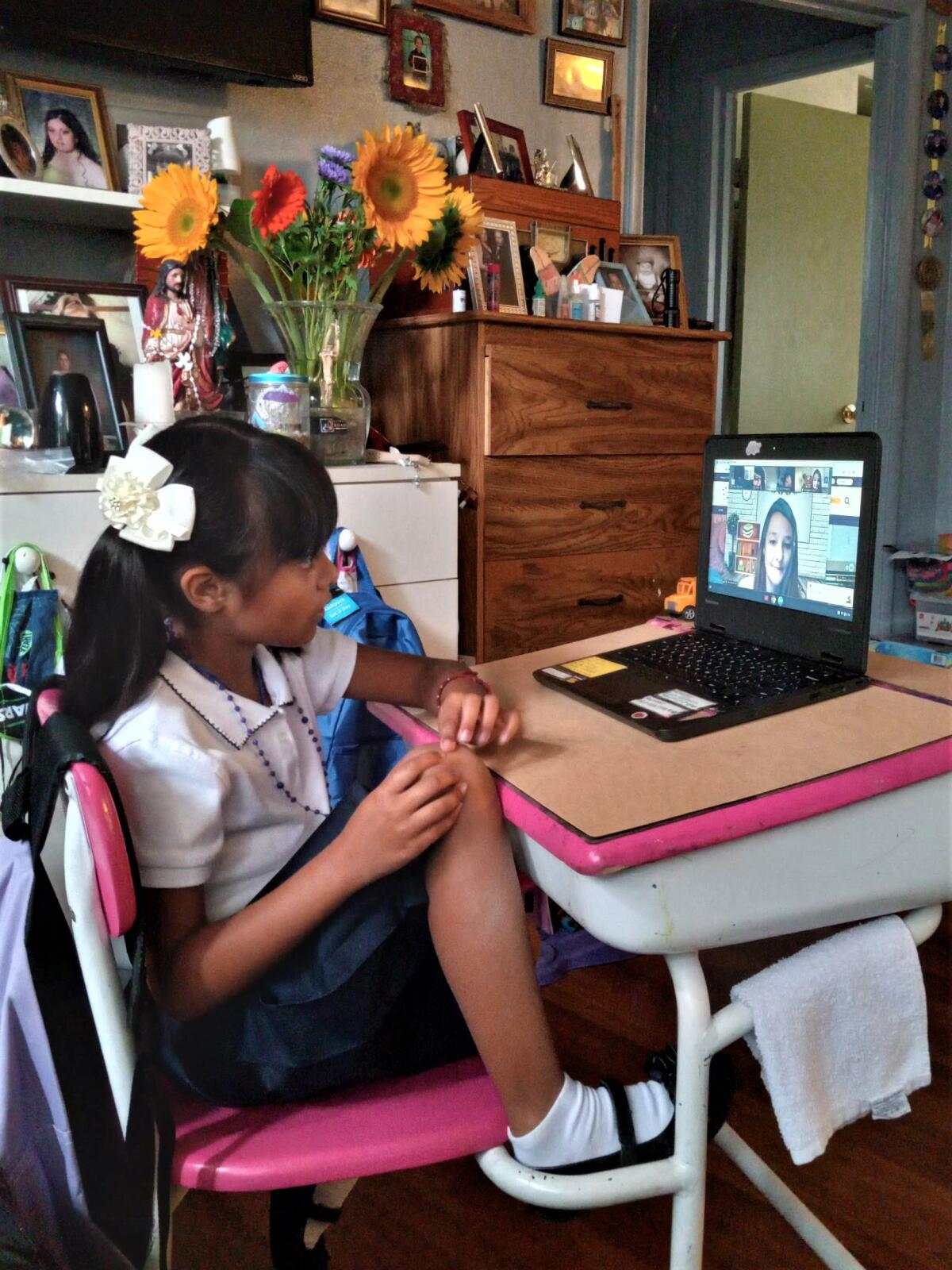
The virtual school gave families the flexibility to travel without interrupting instruction and ensured students could continue learning online without the disruption of shifting from hybrid to in-person learning, and potentially back again, as coronavirus infections ebbed and flowed.
Newport Beach resident Missy FitzSimons enrolled son Owen and daughter Zoe in the Cloud in the fall of 2020 after finding they’d done well at distance learning the previous semester.
“We wanted more consistency and also a safer environment at that time,” she said Friday. “We got them organized on a schedule at home. They were able to work without distractions and be done by noon — they loved it.”
Cloud Campus enrollment reached a peak of 1,800 students during the 2020-21 school year, according to district figures. But now that in-person learning across NMUSD campuses has fully returned to pre-pandemic levels, participation in virtual classes has, consequently, shrunk.
In 2021-22, Newport-Mesa Unified recorded 415 students in grades K-12 attended the online school, while so far, about 336 students have committed for the upcoming school year, which begins Monday.
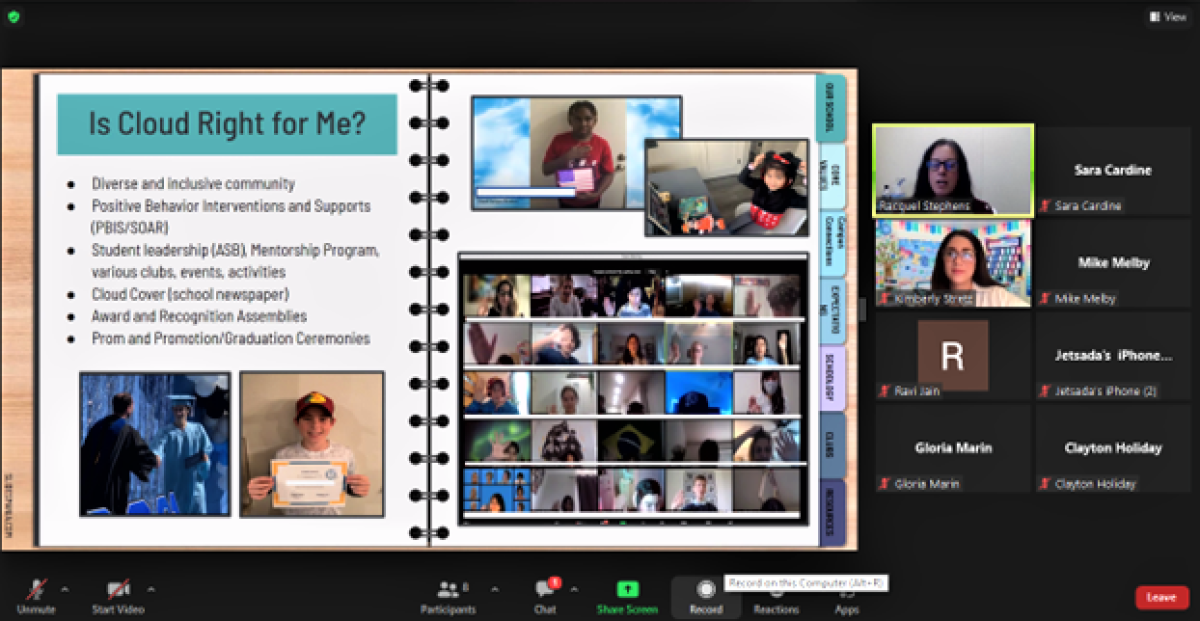
Instead of scrapping the online learning model, school and district officials are rebranding Cloud Campus as an option for families who may not have the same health and safety concerns they had at the peak of the pandemic but whose children may still benefit from online learning.
“Virtual school is the new way of doing independent study,” Principal Racquel Stephens said of the online delivery model. “It serves a very unique population of parents who would like to educate their children in the home environment but who also want a connection to the district.”
Stephens on Wednesday led an online information session for families who might still be interested in enrolling students in the Cloud Campus this fall. Unlike previous school years, students are not required to commit to an entire semester and have the flexibility of moving between virtual and in-person learning.
She emphasized the many clubs and electives offered through the school — from cooking and astronomy to book clubs and computer coding — and said parents often organize optional in-person field trips and get- togethers. In June, students participated in in-person graduation and promotion events.

Cloud students additionally benefit from the technology they learn and use in the classroom, which could potentially put them at an advantage in college and the workplace, Stephens told parents.
“After a very short time at Cloud, our students become experts at tech,” she said, reciting a list of platforms and programs used during a typical school day. “You’d be surprised at how fast they learn them — they run circles around us.”
FitzSimons said while her family initially decided to enroll for health and safety reasons, she was surprised at the unintended benefits the Cloud Campus brought with it.
Owen, typically shy in social situations, felt more emboldened to make friends and join clubs online.
“The next thing we know, he’s in ASB, he’s in book clubs and all these extracurricular activities he would have been too shy to participate in in an in-person setting,” she said.
District officials provided scenarios for online learning in 2020-21 but also shared protocols for mask wearing, health screenings and reporting coronavirus cases if schools were to resume in person.
For Zoe, the change was even more remarkable. Having struggled for years with dyslexia and seeking accommodations in the classroom, FitzSimons said the technological platforms at Cloud Campus made learning and communicating easier for her. She quickly became a straight-A student.
When the family sat down this summer to talk about enrollment in the upcoming academic year, Owen decided to shift back to in-person learning for his freshman year at Corona del Mar High School, so he could attend the school’s Academy of Global Studies and play on the tennis team.
About to enter the seventh grade, Zoe decided she’d rather continue learning online.
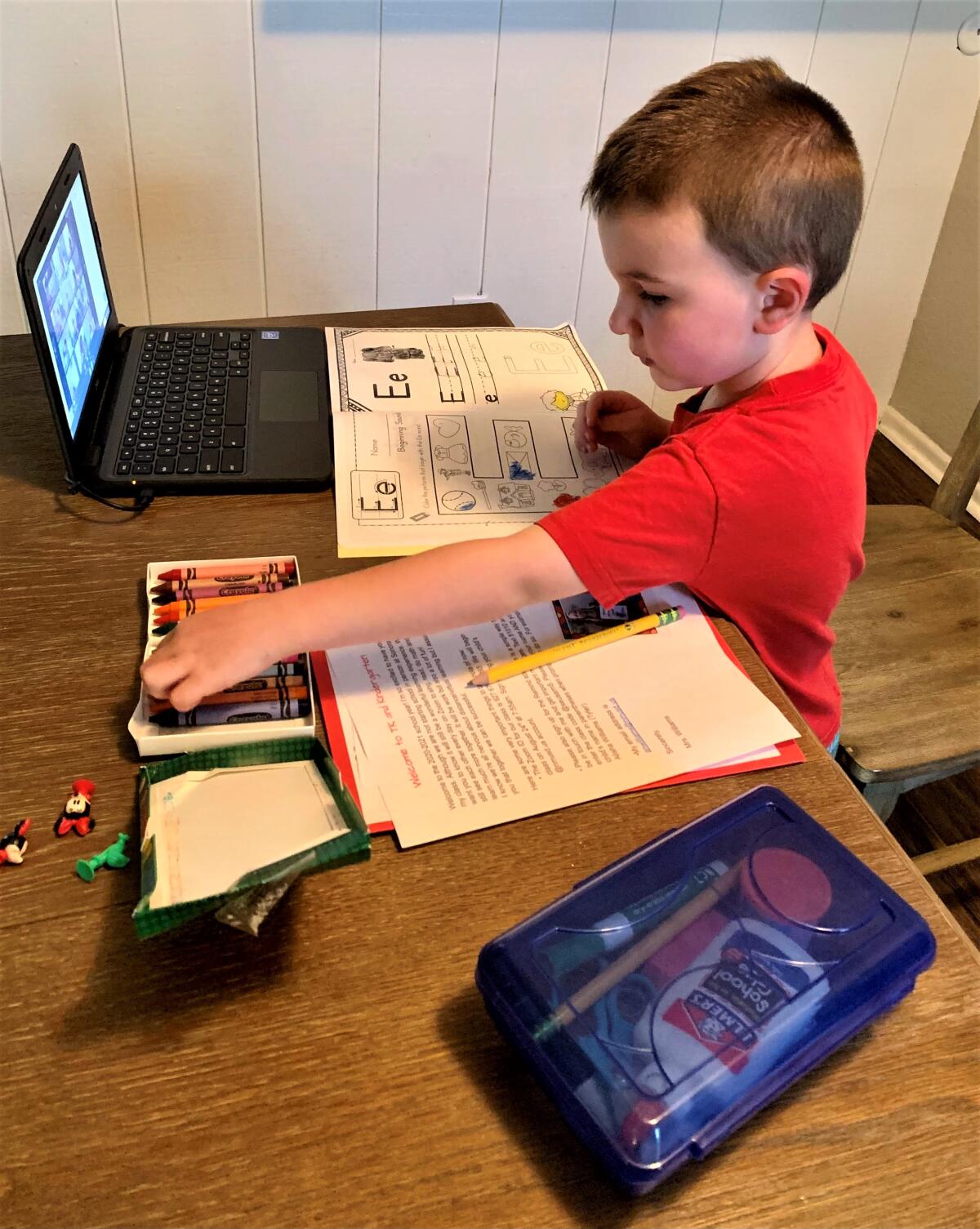
“It was a game changer for her. Now she’s this total wizard who knows how to email teachers when she needs help,” her mom said. “It’s just given her an access to the curriculum she didn’t have before. That’s why she’s deciding to stay at Cloud Campus.”
To operate a fully online K-12 learning model cost just over $4.3 million during the 2021-22 school year, with about 95% paid for by state and federal sources, including COVID-19 relief funds, according to figures provided by the district.
More than $4.7 million has been budgeted for the 2022-23 school year so far. But even if federal and state pandemic assistance recedes, NMUSD is likely to continue developing the Cloud Campus into a new tool for students and families.
“Most of the districts in Orange County have a fully virtual option, so in establishing a virtual school at Newport-Mesa, we are going with the times,” Stephens said in an interview Thursday. “Online learning isn’t going away — it’s just about how are we going to use it and how are we going to position ourselves?”
All the latest on Orange County from Orange County.
Get our free TimesOC newsletter.
You may occasionally receive promotional content from the Daily Pilot.
